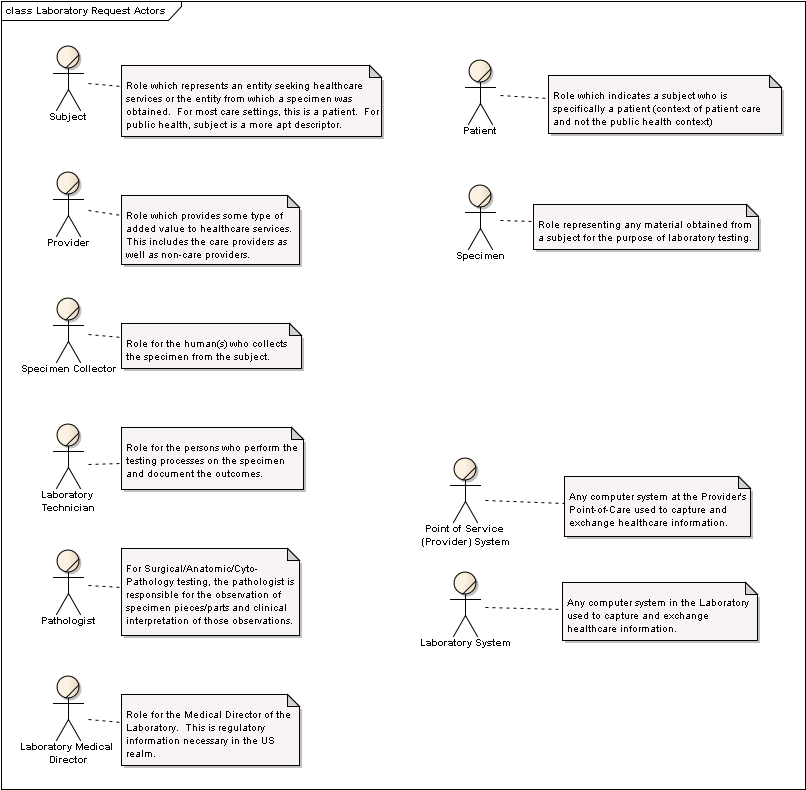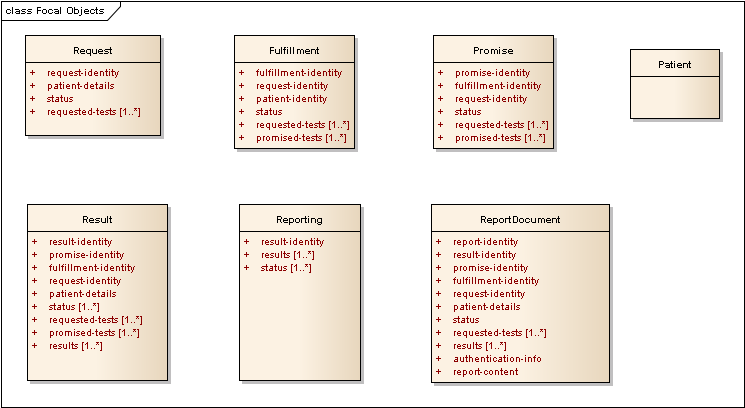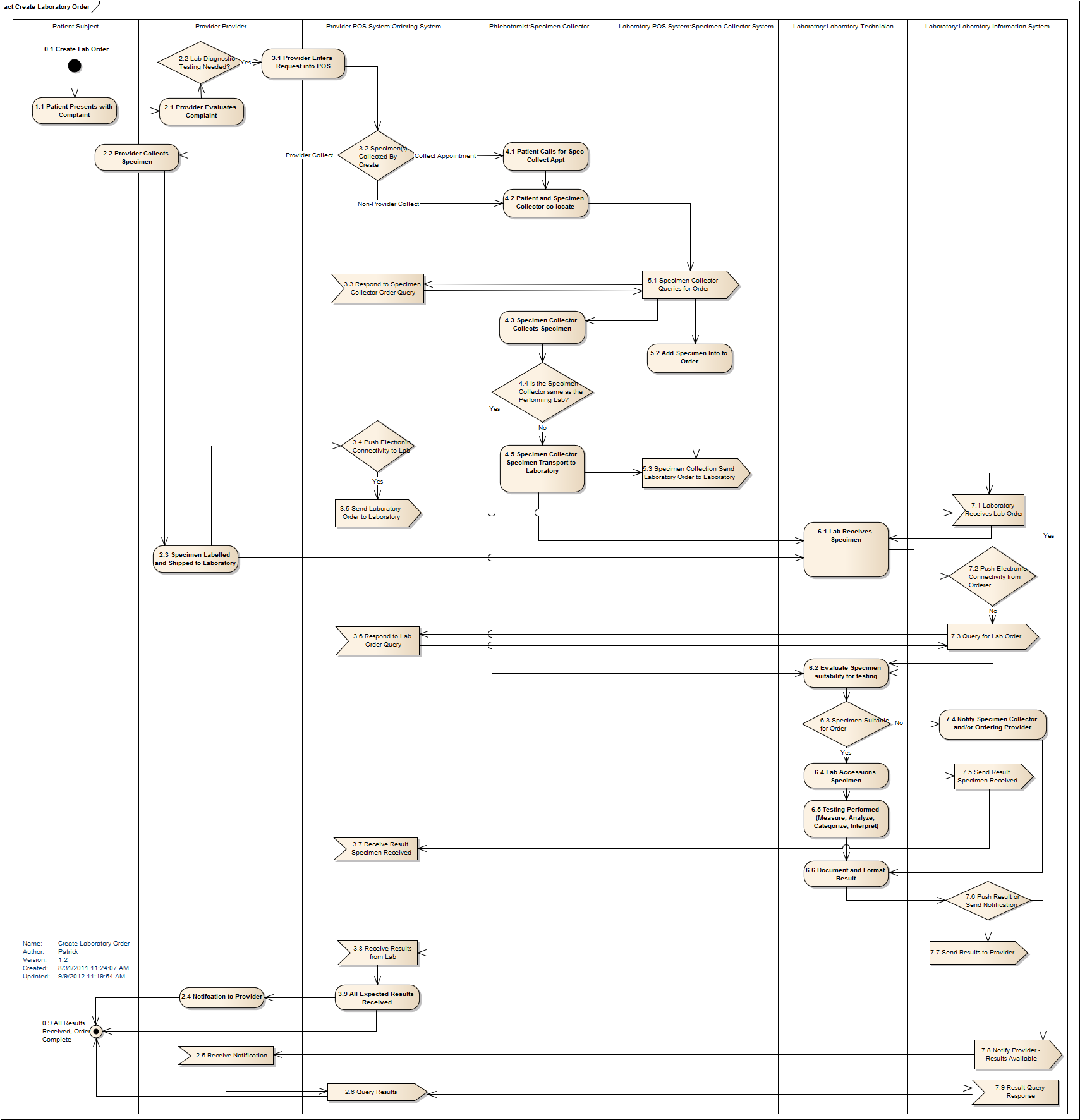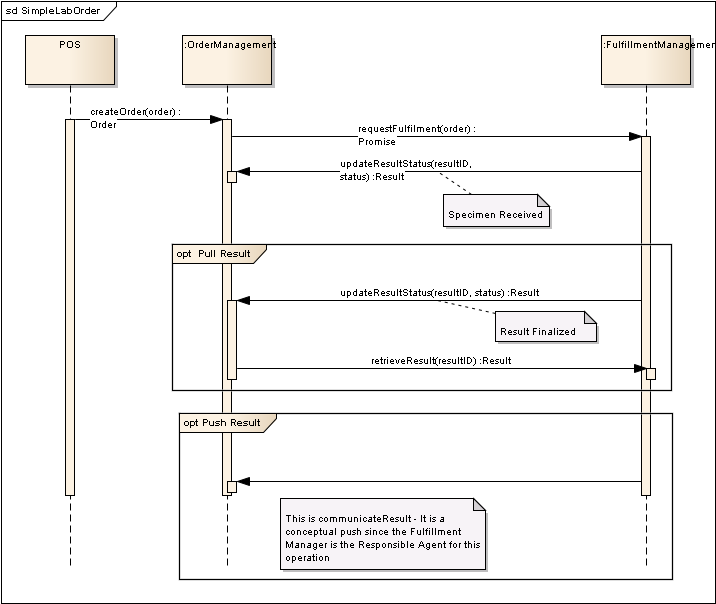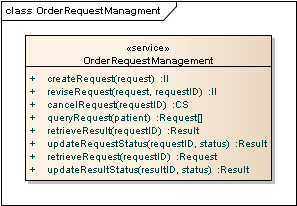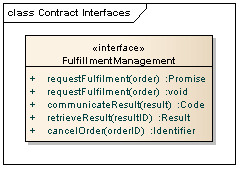Difference between revisions of "OO Behavioral Model Conceptual Specification"
| Line 106: | Line 106: | ||
[[image:OrderRequestManagmentConceptual.png]] [[image:FulfillmentManagementConceptual.png]] | [[image:OrderRequestManagmentConceptual.png]] [[image:FulfillmentManagementConceptual.png]] | ||
| − | =Implemented Patterns= | + | ==Implemented Patterns== |
Revision as of 23:12, 5 January 2012
Link back to project page BF Alpha Project
Contents
Laboratory Request
Executive Summary
- This document contains the necessary definitions, descriptions, graphics, and artifacts relevant to the implementation of an electronic request for healthcare services between an ordering provider and a performing laboratory. In this document, laboratory refers to the collection and processing of specimens.
Business Model Conceptual Artifacts
Business Context
- The laboratory domain comprises the models, messages, and other artifacts that are needed to support messaging related to laboratory tests, or observations.
- The HL7 Laboratory domain includes the provision and use of analytic services in areas such as chemistry, hematology, serology, histology, cytology, anatomic pathology, microbiology, and virology. It does not include blood bank or blood transfusion services. (Note that not all lab specializations will be supported in this first HL7 V3 R1 of the Laboratory Request Topic.)
- Analytic services typically result in observations returned to the order placer and/or added to the patient medical history. Observations may be simple numeric quantitative measurements, such as a blood serum glucose level, qualitative measurements such as micro-organism susceptibility to a particular antibiotic, or complex diagnostic pathology reports.
- Services may be delivered/executed at a external lab, an on-site lab, or at the point of care. This topic covers service requests from all locations, including bedside and in-hospital, clinic and outpatient, and lab-to-lab interactions. It includes orders accompanied by specimens to be analyzed, as well as orders for which the performing laboratory is responsible for obtaining the specimens. Observations (results) may be generated for both ordered and unordered (e.g., POC) tests.
- Workflow includes ability of service provider to accept, modify, or reject an order, with appropriate intent indication to the orderer. Modification may include breaking a parent order into child orders or work items Modification include substituting a particular test Available/orderable Laboratory services may be described by an act in definition mood.
Business Function
For Laboratory Diagnostics (specimen testing), the following illustrates high-level business functions:
Basic business process steps:
- Diagnostic (or Public Health) Specimen-based Laboratory work requested for a subject (patient, animal, environmental location, etc)
- Specimen collected from subject
- Specimen accessioned by lab (i.e., enters lab testing process)
- Specimen processed into testable samples
- Samples tested by lab
- Results from lab testing obtained, interpreted, and approved/authorized
- Results returned to requester
- Requester determines next steps and course of action
Conceptual Assumptions
While the above list shows the performed steps in a basic lab ordering/fulfillment process, each of these steps may be performed by different actors/roles in any one specific process; for example, a Clinician, Laboratory Technician (e.g., phlebotomist), Investigation Team Member, the Subject (patient), or a person responsible for a Subject may collect the specimen. In addition, the steps may be performed at different locations; specimens may be collected at the point of care, at the subject's location (e.g., at a patient's home, "in the field", etc), in the testing lab, or at a specimen collection organization. The steps may also be performed in different order or not performed at all under given, specific conditions - a specimen may not require any processing prior to being tested or a specimen is assigned an accession number prior to being collected if it is being collected in the lab. Finally, the involvement of an electronic system to capture the information and facilitate the business process is not assumed in the above steps and may not be present depending upon the conditions under which each step is performed.
Conceptual Role
Storyboards and Activity Diagrams
- Universal Storyboard – Simple Request
- Universal Storyboard – Revise, Hold, Abort Request
- Universal Storyboard - Specimen Problems Request
Information Model Conceptual Artifacts
Conceptual Information Model
Comment: Provide links to the Analysis Information Model for the domain
The following classes were derived from the storyboards and use cases.
Conceptual Data Types Model
Conceptual State Model
Concept Domains
Solution Specification
Scenario #1 - Simple Lab Order
Overview
Business Scenario
The event flow for a simple lab order is shown below
Contract Roles and Agents
The commissioning and responsible parties involved in this process include:
| Specification Reference | Commissioning System Role | Responsible System Role | Operation |
|---|---|---|---|
| Order Requestor (Placer in v2) | Order Request Manager | createRequest | |
| Order Request Manager | Fulfillment Manager | createRequest | |
| add | add | add |
Computational Viewpoint
The following sequence diagram depicts the interactions that support the above event flow
Service Dependencies
Comment: Describe any dependencies of the process being specified
The parties supporting this process are the Order Request Manager and Fulfillment Manager, depicted below
Implemented Patterns
Comment: Indicate the any patterns that apply to this process specification
